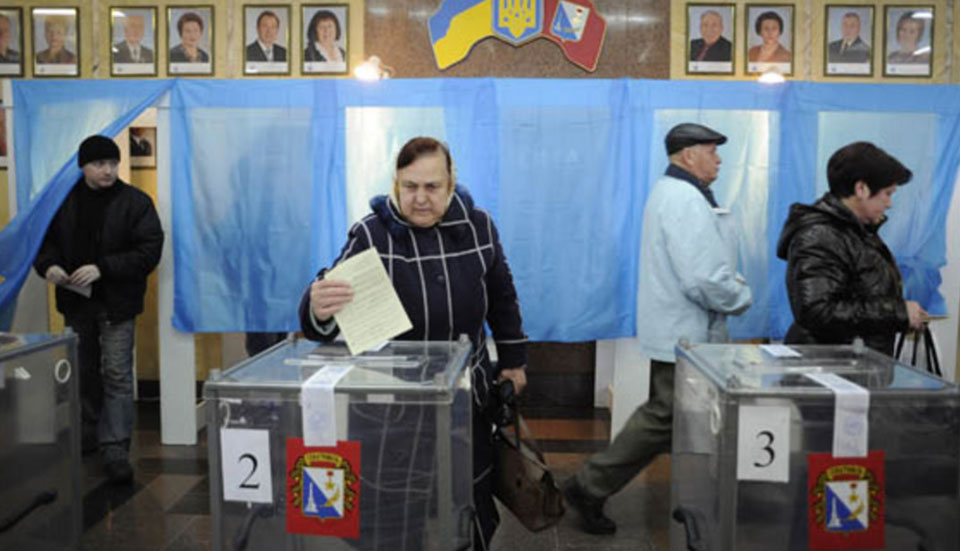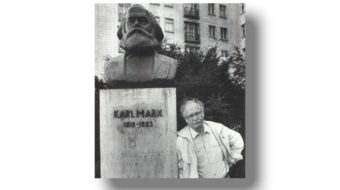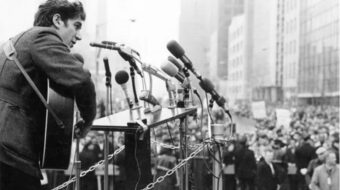
You may have heard about the situation in Ukraine and “Russian aggression” and how it must be stopped. I have been following this situation since 2014 in both English and Russian languages and have drawn some conclusions.
The situation in Ukraine is not a result of Russian aggression, but rather the result of USA-led NATO (North Atlantic Treaty Organization) aggression. Russia is in an extremely defensive position here, with the situation unfolding on its own western border.
The USA-led NATO coalition has been pushing relentlessly eastward since the destruction of the USSR. This has been despite its promise at the end of the Cold War not to expand NATO east of Germany.
In clear violation of this promise, NATO did expand eastward with the objective of containing the rise of Russia. The Russians are not stupid and do not want their country destroyed again.
A bit of history
Seven years ago, Ukraine suffered a coup. An elected government was violently overthrown by pro-EU/NATO forces, fascist forces, and Ukrainian nationalists that immediately set about “de-Russianizing” a historically Russia-friendly country. These measures included banning the use of the Russian language.
Fascists chased anti-coup protesters into the trade union building in Odessa, burning it down with people inside. Many were cremated.
Ukraine’s second most popular political party, the Communist Party of Ukraine, was quickly banned. In response to the coup and anti-Russian acts by fascist forces, the Donbass and Crimea population started to break apart from Ukraine.
The breakup and Crimea
The breakup of Ukraine happened swiftly, within months of the coup. The peninsula of Crimea, part of Russia for hundreds of years promptly held a referendum to rejoin the Russian Federation. The Crimea population identifies as Russian and speaks Russian. The Crimea had only been administratively assigned by the Soviet Union to Ukraine (a Soviet Republic) in the 1950s. Some 96% of Crimea’s population voted to rejoin the Russian Federation.
Crimea is strategically important to Russia so the Russian Federation sent troops to protect the peninsula from the coup-led Ukraine and their NATO sponsors. Over the last seven years, the pro-EU/NATO-backed puppet government of Ukraine has been desperately trying to re-take Crimea. The coup-led Ukraine has cut off roads and supplies, electricity, and water supplies. The Crimeans and Russians have weathered it all, having built vast bridges, constructed power stations and different transmission lines. Although the freshwater situation is proving more difficult to solve, I suspect they will.
Crimea is once more a part of Russia.
The breakup and Donbass
The Eastern part of what was Ukraine, bordering Russia and known as “Donbass” was not so fortunate as Crimea.
A historically Russia-friendly part of Ukraine with a largely Russian-speaking population, Donbass also tried to join the Russian Federation after their country was stolen from them in a bloody coup. Unlike Crimea, the Kremlin did not allow this, as it would be more likely to set off a major war. The Russian government took great pains to not get involved and merely watched in horror as cities along its border were bombed and shelled for the crimes of not recognizing the coup and daring to speak Russian, their native tongue.
Worse, the often swastika-embellished soldiers committing these atrocities called themselves things like “Right Sector” and “Banderovs” in honor of the late Stepan Bandera, a prominent Nazi and nationalist separatist who fought Soviet forces towards the end of World War II. If any people on Earth remember the Nazis clearly, this situation caused the people of Donbass to break off into their own Peoples Republics, the People’s Republic of Donetsk, and the People’s Republic of Luhansk which have endured, against all odds and multiple assaults and provocations, for nearly seven years.
While the Russian government has a strict policy of non-intervention, many Russians and Russian organizations and people from all over the world have helped these fledgling People’s Republics to survive. In much of Donbass, the People’s Republics of Donetsk and Luhansk are the de facto governments, much to the chagrin of the pro-EU/NATO government. As the situation in Donbass has been dire for the last seven years, the Russian government has allowed the people there easy access to Russian citizenship, and so many now have Russian passports. This development complicates the current situation.
The breakup and the shattered remains of Ukraine
This has been a very brief summary of the recent history of Ukraine.
So what is the prospect for the rest of Ukraine?
Ukraine is not a small country, even without the parts that have abandoned her. However, it is extremely poor, having dropped from a relatively high standard of living in Soviet times (up to the early 1990s) to the absolute poorest country in Europe. The glorious future promised by the EU and NATO has not occurred. Much of the industry and agriculture in Ukraine was located in the East. The coup-installed President, Petro Poroshenko, was so bad that he lost the election to a TV comedian, Volodymyr Zelensky, who ran on the promise of better relations with Russia, a promise not kept. In fact, he is shown on TV as running around wearing military gear.
So, with little industry or agriculture or resources, yet little real support from the EU/NATO, what is left of Ukraine is in serious trouble.
The current situation
In 2021, the situation is heating up once again, though it has never really cooled down much. A major contributing factor is the imminent completion of the Nord Stream 2 pipeline, which, like Nord Stream 1, ships gas straight from Russia to Germany bypassing the land routes through Ukraine and Poland. There is a current dispute between Ukraine and the Russian Federation over Ukraine’s high gas transport fees and their failure to pay for all the gas they consume ($17 billion and another potentially $18 billion in fines for non-compliance with the gas contract).
Germany and Russian Federation gas companies agreed to build the 760-mile Nord Stream gas pipelines to provide gas to Germany and the rest of the EU. The Nord Stream pipes (2) run between Vyborg, Russia, and Greifswald, Germany, under the Baltic Sea. The first pipeline was started up in 2011 and the second pipeline was started in 2018. The Nord 2 Stream pipeline is almost complete with only 93 miles left to complete. The offshore gas pipelines have been obstructed by both the Trump and Biden administrations and some NATO countries because they “increase Russian influence in the region.” In addition, the U.S. wants to sell the EU liquified natural gas from U.S. fracked shale fields The obstruction has gone so far beyond sanctioning the construction companies to the point of sending warships and submarines to harass the pipeline laying crews.
Ukraine restarted the war in the Donbass area and Zelensky (Ukraine’s coup president) tried to get Turkey (a member of NATO) to intervene against Russia over the Crimea. Turkey’s Erdogan stated that Turkey will “strongly defend Ukraine’s territorial integrity and sovereignty.” It is apparent that the coup-government in Ukraine is preparing further confrontations against the Donbass independence movement and possibly Crimea.
All these efforts appear to be in Ukraine’s pursuit of membership in NATO and aim to bring NATO troops into Ukraine. Russia has clearly stated that NATO’s presence in Ukraine is unacceptable. The U.S. and the EU members of NATO are bringing the region to the point of war.
Meanwhile, this week, the USA is sending two warships, a destroyer, the USS Roosevelt, and a guided-missile destroyer, the USS Donald Cook to the Black Sea, while assuring President Zelensky that he has their “full support.”
The likely outcomes
The current situation in the shattered remains of Ukraine, as well as her former territories, could have several extremely bad outcomes, particularly for the people of Ukraine.
Of course, the worst possible outcome is a direct clash between the U.S. and Russia, which could quickly escalate into all-out nuclear war. This outcome is very unlikely for many reasons, including mutually assured destruction.
A more likely outcome, unfortunately for what remains of Ukraine, is that President Zelensky will find out that NATO support rings hollow. Such NATO assurances to Georgia in 2008 were never carried out. In fact, then-president George W. Bush urged NATO membership for both Georgia and Ukraine. A pipeline was also at issue there.
The Donbass independent forces are well armed and will defend their territory with help from the Russian Federation. The Russian Federation has already stated that they will not accept NATO troops in Ukraine. Ukraine is a military strategic gateway to Russia. The pipeline will be finished, and Ukraine will be left to deal with its own internal crisis.
Only political negotiations can lead to a solid ceasefire in Ukraine and a longer term peace outcome. This is what is needed to alleviate this crisis. This is in the interest of the people of the Ukraine, EU countries, Russia, and the U.S.










